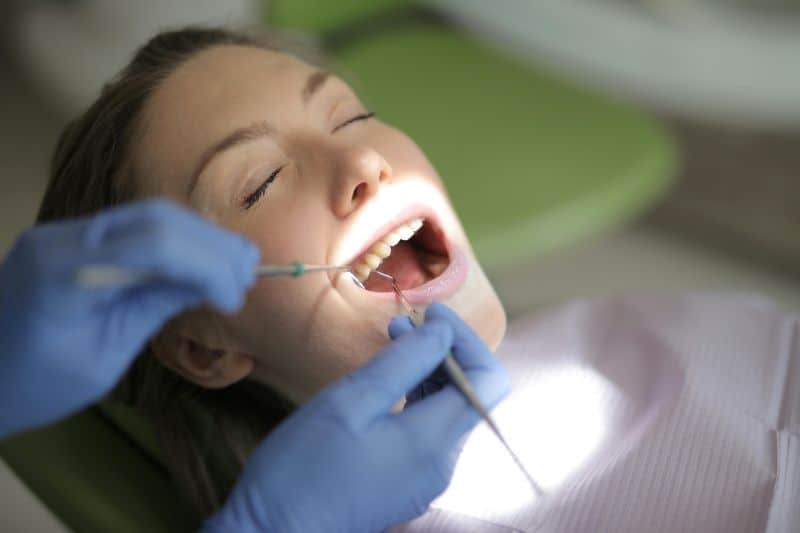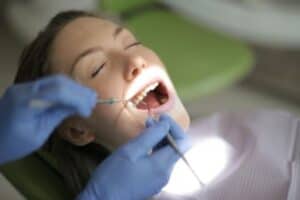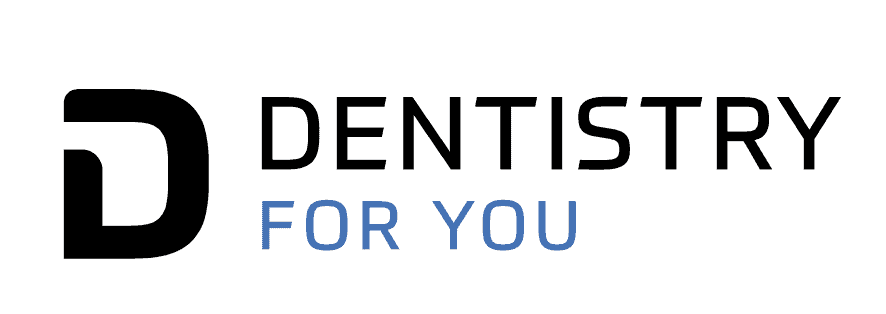
29 May Foods That Naturally Clean Your Teeth While You Eat
Foods That Naturally Clean Your Teeth While You Eat
A radiant smile isn’t just about good genes—it often comes down to the foods you eat every day. Surprisingly, some foods can actually help clean your teeth while you eat. That’s right: foods that naturally clean your teeth while you eat are a real thing, and they could be your secret weapon to better oral hygiene.
This article dives into the science behind these foods, uncovers 13 powerful tooth-cleaning picks, and helps you understand how to incorporate them into your routine for optimal dental health.
How Food Impacts Oral Health
The Role of Diet in Dental Hygiene
Your diet plays a huge role in keeping your teeth healthy. Sugary and acidic foods are often the main culprits behind tooth decay, enamel erosion, and gum disease. But it’s not all bad news—plenty of foods work in your favor.
Foods that are fibrous, calcium-rich, or contain natural acids can help scrub your teeth, neutralize harmful bacteria, and stimulate saliva production. This all leads to a cleaner mouth and healthier teeth.

Why Natural Tooth-Cleaning Foods Matter
While brushing and flossing are still essential, natural tooth cleaning foods can provide extra protection. They act like natural toothbrushes, gently scrubbing away plaque and debris. Plus, they encourage saliva production, which is your mouth’s natural way of rinsing away harmful bacteria and food particles.
Top 13 Foods That Naturally Clean Your Teeth
Let’s dive into the powerhouse foods that polish your pearly whites while you munch.
1. Apples – Nature’s Toothbrush
Apples are crunchy, juicy, and loaded with fiber. When you bite into one, its fibrous texture acts like a natural toothbrush, scrubbing away plaque and stimulating your gums.
Benefits: Removes food particles, boosts saliva, and freshens breath.
Tip: Leave the skin on for maximum fiber.
2. Carrots – Crunchy and Cavity-Fighting
Raw carrots are like little dental scrubbers. Their crunchy texture helps dislodge food debris and massage gums.
Benefits: High in fiber and vitamin A.
Best Time to Eat: After meals to clean your teeth naturally.
3. Celery – The Unsung Hero of Oral Health
Celery might be boring to some, but it’s excellent for your teeth. It has a fibrous structure that naturally cleans the teeth and stimulates saliva.
Bonus: It’s great paired with tooth-friendly dips like Greek yogurt or almond butter.
4. Cheese – A Calcium-Packed Enamel Booster
Cheese is rich in calcium and phosphate, which help restore tooth enamel. It also balances the pH level in your mouth, reducing the risk of decay.
Ideal Choice: Aged cheeses like cheddar or Swiss.
5. Leafy Greens – Alkaline and Antioxidant-Rich
Spinach, kale, and other leafy greens are packed with calcium, folic acid, and other important vitamins. These nutrients help build tooth enamel and combat gum disease.
How to Eat: Add them raw to salads or smoothies for best results.
6. Green Tea – Plaque-Reducing Powerhouse
Green tea contains polyphenols that reduce plaque formation and fight bacteria. It’s also rich in fluoride, which strengthens teeth.
Tip: Drink unsweetened green tea for optimal benefits.
7. Strawberries – Malic Acid for Whitening
Strawberries contain malic acid, a natural enamel-friendly whitening agent. While acidic, when eaten in moderation, they can brighten your smile.
Pro Tip: Mash a strawberry with baking soda for a natural whitening paste (use sparingly).

8. Nuts – Scrubbing While You Snack
Almonds, walnuts, and cashews offer texture that helps physically clean the teeth. They’re also high in minerals that strengthen enamel.
Snack Smart: Choose raw, unsalted nuts for maximum dental benefits.
9. Yogurt – Probiotic Protection for Gums
Probiotics in yogurt help balance the bacteria in your mouth and support gum health. Yogurt is also high in calcium, essential for strong teeth.
Look For: Plain, unsweetened yogurt with live active cultures.
10. Water – Nature’s Rinse Aid
Simple but powerful, water rinses away food particles and bacteria, helping to prevent stains and cavities.
Fluoridated Water: Offers additional protection by strengthening enamel.
11. Cucumbers – High Water Content and Gentle Cleaning
Cucumbers are high in water and fiber, making them ideal for cleansing your mouth. They help freshen breath and reduce dry mouth.
Pro Tip: Eat them sliced in salads or on their own for a crisp, clean mouthfeel.
12. Oranges – Vitamin C for Gum Health
Oranges are packed with vitamin C, which strengthens blood vessels and connective tissues in your gums. While acidic, their fibrous pulp helps clean teeth when eaten fresh.
Tip: Rinse your mouth with water after eating to minimize acidity.
13. Onions – Bacteria-Fighting Benefits
Raw onions have antibacterial sulfur compounds that fight harmful oral bacteria. Though they might not freshen your breath, they do clean your mouth internally.
Best Use: Add thin slices to sandwiches or salads.

FAQs About Teeth-Cleaning Foods
Can food really replace brushing?
No. While these foods help clean your teeth, they complement brushing and flossing—not replace them. Always maintain your regular oral hygiene routine.
Even the most fibrous or acidic foods can’t remove plaque as effectively as a toothbrush and dental floss. Think of these foods as bonus tools in your dental care kit—not the foundation.
How often should I eat these foods?
Incorporate at least 2–3 of these foods daily. Snacking on them after meals can be especially effective.
Consistent intake ensures that you’re supporting your teeth throughout the day. Over time, regular consumption can aid in reducing plaque and promoting stronger enamel.
Do these foods work for kids?
Absolutely. Most of these options are kid-friendly and can help children develop healthy eating and dental habits early on.
Crunchy vegetables and fruits can also help with jaw development and chewing strength. It’s a great way to get kids involved in caring for their teeth without the fight over a toothbrush.
Are there any foods I should avoid?
Yes. Avoid sticky candies, sugary drinks, and overly processed snacks that cling to teeth or promote plaque buildup.
Foods high in starch and refined sugars feed cavity-causing bacteria, leading to decay. It’s also wise to limit frequent snacking on these harmful items to reduce acid attacks on enamel.
Is it okay to eat these foods with braces?
Mostly yes—though skip hard nuts or raw carrots if advised by your orthodontist. Softer options like yogurt or strawberries are ideal.
Some fibrous or crunchy foods might damage brackets or wires, so always follow your orthodontist’s dietary guidelines. Blending or steaming certain items can make them safer without losing their benefits.
What’s the best time to eat teeth-cleaning foods?
After meals is best. These foods can help remove leftover debris and refresh your mouth between brushing sessions.
Including them in your snacks or as part of dessert can help neutralize acids from previous foods. It’s also a helpful habit when you’re unable to brush after eating.
Do these foods help with bad breath?
Yes, several of these foods can reduce or neutralize bad breath. Apples, celery, and green tea, for example, help scrub away odor-causing particles and promote saliva, which keeps your mouth fresher.
Probiotic-rich foods like yogurt also balance the bacteria in your mouth, preventing unpleasant odors.
Can I still get cavities if I eat these foods?
Yes. While these foods are beneficial, they don’t make you immune to cavities.
If your oral hygiene is lacking or if you consume too many sugary or acidic items alongside them, cavities can still form. Think of these foods as support, not a shield.
Are there any side effects of eating these foods frequently?
Generally, no—especially when eaten as part of a balanced diet. However, overconsumption of acidic fruits like oranges or strawberries could wear down enamel over time.
It’s important to rinse your mouth with water after eating acidic foods and to maintain a variety of tooth-friendly options.
Do these foods whiten teeth?
Some of them can help maintain or slightly brighten your smile. Strawberries, apples, and crunchy veggies help polish the surface of teeth and remove mild stains.
However, they aren’t a substitute for professional whitening treatments if your goal is dramatic results.
Conclusion – Crunch Your Way to Better Dental Health
Eating isn’t just about nutrition—it can also play a key role in your oral hygiene. By incorporating these 13 teeth-cleaning foods into your daily diet, you’re giving your teeth and gums a natural boost. So the next time you reach for a snack, think about your smile.
And remember: while these foods support dental health, they’re most effective when used alongside regular brushing, flossing, and dental checkups.


Sorry, the comment form is closed at this time.